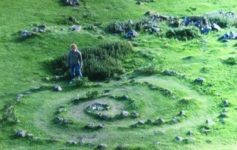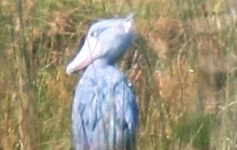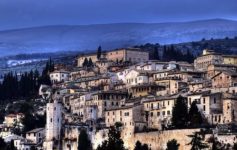Some forms, with flowers 20-25cm (8-10 inch) long and 10-12cm (4-5 inch) across, are sometimes thought to be a separate species and are given the name Brassia brachiata. In case of overfretilising, flush the pot thoroughly. So, it is unpretentious, grows well and develops in room conditions, and its flowering lasts all year. Brassia verrucosa in World Checklist of Selected Plant Families. References External links. Never allow the root zone to sit in water. Brassia cowanii Snails and slugs will occasionally crawl over and feed on buds, blossoms, leaves and tender stems, resulting in damages that may lead to a secondary infection. Temperature: Brassia verrucosa is a warm to cool growing orchid. Commonly grown species are Brs. Propagation: Divide plants with sufficient pseudobulbs in the spring. Watering. Height: 30-90cm (12-36 inch), PROPER CARE: Definition of brassia verrucosa in the Definitions.net dictionary. Meaning of brassia verrucosa. These orchids come from areas high humidity for most of the year, so keep them well misted with good ventilation and evenly moist and change the watering practices at any stress signs shown by plants. Brassia verrucosa, also known as warty brassia, is a species of plant in the family Orchidaceae native to Mexico, Central America (Costa Rica, El Salvador, Guatemala, Honduras, Nicaragua), Venezuela, and Brazil. In either case they should not be kept constantly wet, particularly in colder weather. In the colder months it will grow in the intermediate to cool range. FLOWER SIZE: 6 to 8 -- information provided by Jay Pfahl, author of the Internet Orchid Species Encyclopedia (IOSPE). Thrips suck the sap of flowers and inflorescences, resulting in failure of bud development, non-opening of flowers, distorted flowers with brown patches and colour breaks. During this rest period give only enough water to keep the mixture from completely drying out or the pseudobulbs from shriveling. Cut the rhizome into two or more segments, making sure that each section carries at least two pseudobulbs.Plant each segment in a 7-10cm (3-4 inch) container or attach it to a support and water the plant very sparingly until the new growth appears. Long upright spikes with large spidery flowers, green with white lip with green spots. Mature division The best time for repotting these orchids is … Just remember that special needs of this plants: bright but filtered light; intermediate to cool temperatures; apply a weak foliar fertilizer fortnightly during active growth; allow three weeks rest after flowering. Treatment: Use a snail and slugs pesticide to prevent and control them. 2020. It has upright, flattened, egg-shaped, medium green pseudobulbs about 8cm (3 inch) tall and 7cm (3 inch) wide. Uses and display: Brassia verrucosa is an attractive orchid with showy flowers, which will make a wanted addition to any orchid collection. gireoudiana, and Brs. See more ideas about orchid care, orchids, orchid flower. Potting and repotting: Any of the potting mixtures recommended for orchids will be suited. Description: Brassia verrucosa are epiphytic orchids with unusually shaped flowers. Keep humidity at 40 to 60%. (syn. Each pseudobulb carries two leaves about 38cm (15 inch) long and 5cm (2 inch) wide. Watering in active growth period – moderately Oncidium brachiatum (Lindl.) In case of severe infestations, where ants have built nests amongst the orchid, it may be necessary to spray with stronger insecticides. Photos by © Jay Pfahl. Remove the dry, papery sheath from the base of pseudobulbs to prevent buildup of moisture and remove hiding places for pets. Abelia,7,Abutilon,2,Acalypha,1,Acampe,1,Acineta,6,Acriopsis,1,Ada,3,Adenium,3,Adromischus,1,Aeonium,2,Aerangis,30,Aeranthes,8,Aerides,19,Aganisia,2,Agapanthus,8,Agapetes,1,Agave,8,Aglaonema,21,Aichryson,2,Air plants,81,Akebia,2,Aldrovanda,1,Amesiella,3,Anathallis,1,Ancistrochilus,1,Angraecopsis,1,Angraecum,31,Anguloa,1,Annual,6,Ansellia,1,Anthurium,2,Aronia,1,Arpophyllum,1,Arundina,1,Ascocentrum,5,Aspasia,3,Astrophytum,2,Asystasia,1,Aucuba,1,Barkeria,4,Beallara,1,Benzingia,1,Berlandiera,1,Bifrenaria,5,Bletilla,1,Brachtia,1,Brasiliorchis,1,Brassavola,3,Brassia,9,Bryobium,1,Bryophyllum,1,Bulbophyllum,28,Cactus,39,Cadetia,1,Caladium,1,Calanthe,3,Campsis,1,Capanemia,1,Carnivorous plant,12,Catasetum,62,Cattleya,47,Cedrus,3,Celosia,3,Ceratocentron,1,Ceratostylis,2,Cereus,2,Chiloschista,4,Chlorophytum,1,Chondroscaphe,3,Chysis,2,Cirrhaea,1,Cischweinfia,1,Clematis,1,Clowesia,1,Cochlioda,2,Codiaeum,1,Coelia,1,Coelogyne,32,Coilostylis,1,Comparettia,2,Conifers,39,Coryanthes,2,Cosmos,1,Cuitlauzina,2,Cyclamen,23,Cycnoches,7,Cymbidiella,1,Cymbidium,8,Cypripedium,8,Cyrtochilum,2,Cyrtorchis,2,Darlingtonia,1,Degarmoara,1,Dendrobium,212,Dendrochilum,5,Dendrophylax,1,Dieffenbachia,27,Diodonopsis,2,Dionaea,1,Diplocaulobium,1,Disa,2,Disocactus,1,Dockrillia,8,Domingoa,1,Dracaena,5,Dracula,13,Dryadella,3,Dyakia,1,Echeveria,16,Echinocactus,2,Echinocereus,2,Embreea,1,Encyclia,3,Ensete,1,Epidendrum,12,Epigeneium,3,Epiphyllum,1,Eria,1,Erycina,2,Esmeralda,1,Euchile,2,Eulophia,1,Eurychone,2,Fernandezia,2,Galeandra,1,Galeottia,1,Gastrochilus,3,Ginkgo,1,Gomesa,3,Gongora,2,Grammatophyllum,3,Guarianthe,3,Gymnocalycium,2,Habenaria,2,Haraella,1,Hedera,1,Helcia,1,Herb,16,Houlletia,1,Humulus,1,Hybrid,27,Hydrangea,10,Hymenorchis,1,Ionopsis,1,Isabelia,2,Isochilus,1,Jasminum,6,Jumellea,2,Juniperus,1,Kalanchoe,1,Kefersteinia,3,Laelia,15,Larix,4,Lepanthes,2,Leptotes,1,Lithops,27,Lockhartia,1,Ludisia,1,Lycaste,3,Macodes,1,Macroclinium,3,Mammillaria,2,Masdevallia,123,Maxillaria,8,Mazus,1,Mediocalcar,1,Meiracyllium,1,Mentha,1,Mexicoa,1,Microterangis,1,Miltonia,8,Miltoniopsis,12,Monstera,1,Mormodes,4,Musella,1,Myrmecophila,1,Mystacidium,3,Nageia,1,Neobathiea,1,Neobenthamia,1,Neofinetia,1,Notylia,2,Odontoglossum,18,Oeoniella,1,Oncidium,21,Orchid,1247,Others Genus,245,Otoglossum,1,Pabstia,1,Paphinia,2,Paphiopedilum,77,Papilionanthe,2,Parodia,2,Pecteilis,1,Perennials,115,Peristeria,1,Pescatoria,8,Petunia,2,Phaius,5,Phalaenopsis,43,Philodendron,2,Pholidota,2,Phragmipedium,16,Pilea,5,Pinus,25,Plectranthus,8,Plectrelminthus,1,Pleione,18,Pleurothallis,5,Podangis,1,Podocarpus,2,Polystachya,14,Ponthieva,1,Pothos,1,Promenaea,2,Prosthechea,4,Pseudolarix,1,Psychopsiella,1,Psychopsis,5,Pteroceras,1,Puna,2,Rangaeris,2,Renanthera,4,Restrepia,6,Rhipsalis,14,Rhododendron,27,Rhyncholaelia,2,Rhynchostele,8,Rhynchostylis,2,Robiquetia,1,Rodriguezia,4,Rodrigueziopsis,1,Rossioglossum,4,Rudolfiella,1,Ruellia,1,Saintpaulia,1,Sansevieria,1,Sarcochilus,4,Sarracenia,9,Scaphosepalum,1,Schlumbergera,4,Schoenorchis,1,Scuticaria,1,Sedirea,1,Sedum,11,Selenicereus,1,Shrubs,57,Sievekingia,1,Sigmatostalix,3,Sobennikoffia,2,Sobralia,1,Solenidiopsis,1,Sophronitis,1,Spathiphyllum,1,Spathoglottis,10,Stanhopea,9,Stauntonia,1,Stenoglottis,1,Streptocarpus,1,Succulents,71,Sudamerlycaste,1,Symphyglossum,1,Thunia,1,Tillandsia,81,Tolumnia,7,Trachelospermum,1,Tree,41,Trichocentrum,7,Trichoglottis,4,Trichopilia,4,Trisetella,1,Tsuga,1,Turbinicarpus,2,Vanda,8,Vandopsis,1,Vanilla,1,Vines and Climbing Plants,25,Vitis,1,Warczewiczella,2,Warmingia,1,Wisteria,1,Zamioculcas,1,Zelenkoa,1,Zygopetalum,5,Zygosepalum,1, Travaldo's blog: Grow and care Brassia verrucosa orchid - The Warty Brassia, Grow and care Brassia verrucosa orchid - The Warty Brassia, https://3.bp.blogspot.com/-dYxqJK9NGHE/XIuPnz8iM1I/AAAAAAAAN1Q/VLCWOgK_6jM-u-o8iEAIO7gBJIqCa3I6ACEwYBhgL/s400/1024px-Brassia_verrucosa_1zz.jpg, https://3.bp.blogspot.com/-dYxqJK9NGHE/XIuPnz8iM1I/AAAAAAAAN1Q/VLCWOgK_6jM-u-o8iEAIO7gBJIqCa3I6ACEwYBhgL/s72-c/1024px-Brassia_verrucosa_1zz.jpg, https://travaldo.blogspot.com/2017/12/grow-and-care-brassia-verrucosa-orchid.html, Not found any post match with your request, STEP 1: Share. To reduce any root damage, soak the container where is grown the orchids for ten minutes in warm water to make roots more pliable and easier to remove from the pot. Feeding in important for healthy growth and flowering. Brassia verrucosa osobito cvjetasta . Distribution and habitat: Brassia verrucosa is an epiphytic orchid native to Mexico, Central America (Costa Rica, El Salvador, Guatemala, Honduras, Nicaragua), Venezuela, and Brazil. Brassia orchids are a small genus of 30 to 40 species with numerous hybrids, and when it comes to Brassiaorchid care, there are a few important things to know: The petals of the Brassiaorchid are yellow or green in color with brown or maroon striping or spotting. Fertiliser: A balanced fertiliser will work best for Brassia verrucosa. Display these orchids at eye level, where its flowers can be seen up close. Scale insects and mealy bugs sometimes attacks these plants, hiding in particular under the dried-up leaves on pseudobulbs and at the base of old flower stalks after these have been cut back. Features – flowers Flori (20-22 cm diametru) cca 15 pe un peduncul oblic, înalt de 60-85 cm, petale galbene-verzi cu cîteva pete maronii la bază) vîrf lung. The lip of B brachiata is lobed with the mid-lobe being broadly ovate to almost deltoid. This week's Photo of the Week is a Brassia verrucosa submitted by Jorge. Oncidium brachiatum Brassia longiloba gireoudiana. When an orchid plant starts to show signs of wilting, it will be due to root rot caused by Fusarium. While these orchids enjoy high humidity and moist potting mix, they will not tolerate wet feet. verrucosa. Reference page. It is a cross of Brs. Brassia is a genus of orchids in the Eastern hemisphere commonly called the “spider orchid” due to the long, bizarre shapes of its sepals, which spread out like a spider’s legs. Recommend; Description; Ratings (4) Easy to grow, great beginners orchid. 1848"; "Brassia cowani R.H. Torr. 1854"; "Brassia longiloba DC 1848"; "Brassia odontoglossoides Klotsch & Karst. In addition, mist-spray the foliage daily. A balanced fertilizer will work best for Brassia verrucosa: 1/4 teaspoon 20-20-20 with 4 liters of water for irrigation is good. Like most orchids, the roots of Brassia verrucosa are sensitive to fertilizer salt buildup, so at all times, use fertiliser at half strength, and when watering, flush the pot thoroughly. The best time for repotting these orchids is in spring. Thereafter, treat the growing plant as a mature Brassia verrucosa. Videos Vezani Članci: How to care for Brassia Orchids - watering, fertilising, reblooming. Contents[show] Description Plants bloom from spring to fall with ten to twenty 15 cm wide flowers. ex Lindl. Potting and repotting: Any of the potting mixtures recommended for orchids will be suited. Ploché, vejčité pahlízy nesou obvykle dva dlouhé měkké listy. Brassia verrucosa orchid, also called as The Warty Brassia, is a species of the genus Brassia. Foliage – green Like most orchids, the roots of Brassia verrucosa are sensitive to fertilizer salt buildup, so at all times, use fertiliser at half strength, and when watering, flush the pot thoroughly. Grow in good light and humidity with a minimum of 12°C. Brassia Orchid Plant Care. Brassia (BRASS-ee-ah) orchids are often referred to as the “Spider Orchid” because the petals of the blooms are elongated, narrow, and spiky and resemble a spider’s legs. Brassia longiloba DC. Brassia verrucosa can be grown epiphytically on a simple wooden support. 1854; Brassia wageneri Rchb. Rchb.f. Humidity – high, Flowers Lady Flowering Plants, Garden Plants, Indoor Plants, Orchids Brassia aristata, Brassia brachiata, Brassia coryandra, Brassia cowanii, Brassia longiloba, Brassia odontoglossoides, Brassia verrucosa, Brassia verrucosa subsp. Watering: Water regularly, particularly through the growing period. This will help the orchid to heal if there is a fungal or pest infestation that must be treated. Some forms, with flowers 20-25cm (8-10 inch) long and 10-12cm (4-5 inch) across, are sometimes thought to be a separate species and are given the name Brassia brachiata. The growing season is from spring to early autumn and during this period a liquid fertilizer applied every 2 – 3 weeks as part of the watering regime will help them thrive. Brassia verrucosa Bateman ex Lindl.. Common Name: The Warty Brassia Family: Orchidaceae Juss. Gardening: Brassia verrucosa likes a fairly open, free-draining medium and intermediate to warm temperatures during the growing season. Brassia Rex is an orchid hybrid originated by W.W.G.Moir in 1964. Temperature in rest period – min 10°C max 24°C (50-75°F) Each flowers grows up to 12-15cm (5-6 inch) long and 10cm (4 inch) across. It likes to remain undisturbed for a few years and its habit of going to sleep for some months respected. Never expose these orchids to direct sunlight. As the flowers open consecutively along the stem over a period of days, by the time the last are opening, the petals and sepals of the early flowers are a deeper color. Plant blooms from winter to spring Grow plants in intermediate temperatures in partial shade. Your physical location; where you grow your plants, how much time you have to devote to their care, and many other factors, will need to be taken into account. Brassia transamazonica D.E.Benn. Also, good air circulation is essential: the air flow should be moist and gentle – no orchids like draughts. Brassia odontoglossoides Klotzsch & H.Karst. Accessed: 2020 April 25. Feed them a weak weekly liquid fertilizing by following the instructions on the fertilizer package except make the solution at quarter strength. Water it frequently in its fast-draining situation during the active growing season of spring to fall and then slightly less in a very short winter dormancy. Water plant when mix drys, but do not allow to dry out completely. arcuigera (= Bs. Jan 9, 2019 - Brassia verrucosa orchid was first described by Lindley in 1840. Move Brassia verrucosa plants into container two sizes larger whenever more room for new pseudobulbs is required – about once every two or three years. STEP 2: Click the link you shared to unlock, Can not copy the codes / texts, please press [CTRL]+[C] (or CMD+C with Mac) to copy. Information and translations of brassia verrucosa in the most comprehensive dictionary definitions resource on the web. & Christenson 2001; Brassia verrucosa Lindley 1840; Brassia villosa Lindl. It is distinguished from the other Brassia by the green warts on the base of … A more traditional looking Brassia, but a larger flowered form of the Mexican species with very starry shaped flowers and a more olive-green colouring. Brassia verrucosa Lindl. Brassia gireoudiana - ©2009 Greg Allikas Several synonyms are know for this species such as: "Brassia aristata Lindley 1844"; "Brassia brachiata Lindley 1842"; "Brassia coryandra C. Morr. Higher humidity is recommended in summer or windy, more sun-exposed situations. Care Brassia orchids are quite easy to grow indoors. Flowers are fragrant. May 21, 2017 - Explore Kingnid's board "Brassia", followed by 201 people on Pinterest. Feed them a weak weekly liquid fertilising by following the instructions on the fertiliser package except make the solution at quarter strength. LATE To . Country of Origin: Mexico to N. Brazil Description: [syn B. brachiata Lindl.] This species is included in the list in Annex II of the CITES International Convention on Trade in Natural Resources. Move Brassia verrucosa plants into container two sizes larger whenever more room for new pseudobulbs is required – about once every two or three years. f. 1852; Orchid Care: How to Grow Brassia Orchids . Inflorescence attacked by thrips shows a typical distorted inflorescence development. This pants is native to Mexico, Central America (Costa Rica, El Salvador, Guatemala, Honduras, Nicaragua), Venezuela, and Brazil, in open humid, evergreen to semi-deciduous cloud forests, on tree trunks and larger branches at elevations of 900 to 2400 meters. As the flowers open consecutively along the stem over a period of days, by the time the last are opening, the petals and sepals of the early flowers are a deeper color. The genus was named after William Brass, a British botanist and illustrator, who collected plants in Africa under the supervision of Sir Joseph Banks. The most common types of fungi capable of infecting orchids are the fungal crown rot caused by Phytophthora; damping-off disease by Pythium; black spot by Alternaria, Helminthosporium and Anthracnose; leaf tip disease by Gloeosporium. Number of species: The World Monocot Checklist contains 34 accepted names (2007) Distribution: These plants grow widely distributed in Florida, Mexico, the Caribbean area to Surinam, Brazil, and Bolivia. Also, the sweet honeydew sucking sap insects secret encourage sooty mold – a type of fungi – to adhere and to grow on the plants, making them very unsightly. Household water-based insecticide sprays can also be used, but do not spray directly into the plants. Use an adequate pesticide to combat the insects infestation. Brassia aristata To fully exterminate them, systemic insecticide are needed. The roughly diamond-shaped lip is white with dark green, wart like spots. K nejznámějším zástupcům patří B. rex či B. longissima. Paukova orhideja, Brassia . Often in stores Brassia verrucosa is sold, the fact is that it is the most undemanding in care. The best time for repotting these orchids is in spring. Orhideja Brassia . ORCHID CARE: THE SPIDER ORCHID IN FULL BLOOM BRASSIA DATACOSA CARE TIPS Become one of My Awesome subscribers! The colour of the leaves is a good indicator to show if the orchid gets enough light. Given the fact that they are epiphytes, they require well-draining potting mixture with medium bark, and you may also quite successfully grow them mounted on slabs (medium-sized species, because they can grow very large), the best way is to pot them into hanging baskets to allow roots to be well aerated, because their roots are prone to rotting. 1854; Flower closeup. The plant flower in the late spring through the early autumn on a basal, to more than 2' (60 cm) long, erect to arching inflorescence arising on a mature pseudobulb which are strongly 2 ranked and carry many (10 to 20) flowers. The flowers will stay on the plant for about 3 weeks. gireoudiana Govaerts, R. et al. Light – bright The flowers are scented but not of black pepper such as B verrucosa. f. & Warsz. Treatment: Physically removing the scales and then controlling the immature stages with chemical sprays may help lightly infested plants. When the temperature rises above 23°C (73°F) for more than two or three days at a time, stand containers on trays of moist pebbles or suspended water filled saucers below plants in hanging baskets or growing epiphytically on supports. Also, good air circulation is essential: the air flow should be moist and gentle – no orchids like draughts. Th… The flower stem which can be 30-90cm (12-36 inch) long, bears up to 16 fragrant blooms in spring and early summer. Treatment: Fungal diseases can be effectively controlled using recommended range of fungicide either systemic and non-systemic. We continue to take email and phone orders. Brassia gireoudiana Rchb. The sepals and petals are pale green spotted with dark green, red or brownish purple, mainly near the base. Published on the internet. Brassia coryandra É.Morren Brassia cowanii Lindl. The Board of Trustees of the Royal Botanic Gardens, Kew. The younger of the flowers are scented, but again there is a deterioration to an odor as they age. Never allow the root zone to sit in water. Move Brassia verrucosa plants into container two sizes larger whenever more room for new pseudobulbs is required – about once every two or three years. The sepals and petals are pale green spotted with dark green, red or brownish purple, mainly near the base. Jan 15, 2016 - Brassia is a genus of orchids classified in the Oncidiinae subtribe. Symtoms usually appear during the wet season when it rains frequently and the days are cloudy. This pants is native to Mexico, Central America (Costa Rica, El Salvador, Guatemala, Honduras, Nicaragua), Venezuela, and Brazil, in open humid, evergreen to semi-deciduous cloud forests, on tree trunks and larger branches at elevations of 900 to 2400 meters. It is considered a "primary hybrid" because it is a cross between two species. B. verrucosa is an extremely graceful orchid from Guatemala, with arching spikes, often more than 2 ft. long, bearing in spring and early summer as many as ten flowers; these are green ornamented with dark green warts on the sepals and petals and have a white, green-spotted lip; this orchid needs a minimum winter temperature of 50 degrees. Brassia Edvah Loo x Ochraleuca . If grown in a heavy pot or wooden basket, use medium-sized bark for the roots to grow through. Ideally this species should be in a warm environment year round to support its constant growth. Care. Shape – bushy Weevils attack is normally seen as holes in plants as they bore into the soft tissue to lay eggs after which the grubs will continue to eat and enlarge the stem cavity. Beetles eat the soft tissues of orchids such as the tender shoots and new shoots. Temperature in active growth period – min 10°C max 24°C (50-75°F) Plant will flower when the new bulbs have formed. See more ideas about orchids, species, central america. While these orchids enjoy high humidity and moist potting mix, they will not tolerate wet feet. The younger of the flowers are scented, but again there is a deterioration to an odor as they age. SBOE@SBORCHID.COM ~ (800) 553-3387 1250 Orchid Drive, Santa Barbara, CA 93111 ~ (805) 967-1284 ~ FAX: (805) 683-3405 HOURS: We are temporarily closed to the public due to Covid-19 concerns. Brassia is a genus of orchids classified in the subtribe Oncidiinae.It is native to Mexico, Central America, the West Indies, and northern South America, with one species (B. caudata) extending into Florida.. Orchids grown outside of these regions will need supplemental light during spring and fall to give optimal conditions. Problem: The colour of the leaves of Brassia verrucosa orchids is a good indicator to the health of the plant: mid green indicates good health, dark green indicates the plant is growing in too little light, which may affect its flowering potential and yellow leaves indicates too much light. It can be grown in a pot or basket or grown epiphytically on a wooden support. This large species is a warm to cool growing epiphyte of open humid, evergreen to semi-deciduous cloud forests on tree trunks and larger branches from altitudes of 900 to 2400m (3000-7900 feet). Author: admin 2 Comments Care and Culture, Growing Outdoors. CHARACTERISTICS: They should be mid green in optimum light. It is native to Mexico, Central America, the West Indies, and northern South America, with one species (B. caudata) extending into Florida. To reduce any root damage, soak the container where is grown the orchids for ten minutes in warm water to make roots more pliable and easier to remove from the pot. What does brassia verrucosa mean? Homonyms Brassia verrucosa Lindl. Their native habitat usually offers longer light day (equal day and night length) and more brighter then they can get outside of this habitat. Brassia verrucosa in Kew Science Plants of the World online. Minimum temperature in winter for growing is about 8-10 °C (46.4 - 50 °F), and the ideal is 28-30 °C (82.4 - 86 °F) with 60-80% of air humidity. This flower has many advantages. Houseplant care: Brassia verrucosa is an easy to grow orchid. Sympodiální epifytická orchidej původem z tropické Ameriky. After flowering has ceased, encourage these plants to rest for a short time (about three weeks). The Board of Trustees of the Royal Botanic Gardens, Kew. The lip of B verrucosa when flattened is oblong-obovate and is essentially unlobed and the flowers are smaller than B brachiata. Brassia coryandra Treatment: Ants can be controlled with ant baits and traps. Position: Provide them with good light but shaded from sun. To grow such a plant is so simple that even an inexperienced grower can cope with it. Brassia verrucosa is an epiphytic orchid from the genus Brassia. Pro velmi nezvyklý tvar květů bývá někdy zvaná pavoučí orchidej. Rather, mount the clump upon a cork bark slab or upon a tree trunk or palm in partial shade. The colour of the leaves of Brassia verrucosa orchids is a good indicator to the health of the plant: mid green indicates good health, dark green indicates the plant is growing in too little light, which may affect its flowering potential and yellow leaves indicates too much light. It cannot be grown in soil. When the flowers open they last better if removed to slightly cooler conditions. Additionally, this orchid can be grown in a pot or an orchid basket filled with recommended orchid potting mixture. Hence, multiple sprayings may be needed with severe infestation. BUY ANOTHERS SPECIES AND VARIETIES OF BRASSIA HERE! Add to basket Possible delivery method: Australia Post. Ants are not harming direct the orchids, but they have the potential to bring pest infestation as they carry many types of sap sucking insects: aphids, mealy bugs and scale insects. Brassia verrucosa Name Synonyms Brassia aristata Lindl. Z hlediska teplotních nároků je Brassia typickým představitelem temperovaných orchidejí. Brassia verrucosa (4) In stock (1) $ 20.00. Synonymous: Brassia verrucosa subsp. Oncidum brassia: Rchb. Treatment: Insecticides are capable of controlling these insects, but if they are inside the cavities of the plants, they will not be killed. As follows: The Warty Brassia needs a bright light exposure, intermediate so that it will not scald in hot direct rays but also not so dim that the foliage turns dark green. Brassia verrucosa orchid Brassia orchids are easily recognized by their elongated segments, distinctive floral arrangement on the racemes and the entire column and labellum. Brassia Rex is a hybrid in the genus Brassia. Brassia verrucosa orchid was first described by Lindley in 1840. Rchb.f. brassia rex orchid hybrid care and culture Cultural information should only be used as a guide, and should be to be adapted to suit you. These orchids come from areas high humidity for most of the year, so keep them well misted with good ventilation and evenly moist and change the watering practices at any stress signs shown by plants. Brassia odontoglossoides The lip when flattened is spathulate with that conspicuous apical lobe. Ljubičasta brasija . Each flowers grows up to 12-15cm (5-6 inch) long and 10cm (4 inch) across. Inflorescence. Ensure proper air circulation. 1847"; "Brassia ophioglossoides Klotzsch & Karst. f.). Brassia verrucosa can be grown epiphytically on a simple wooden support. After flowering has ceased, encourage these plants to rest for a short time (about three weeks). f. 1845; Brassia warszewiczii Rchb. Specie care înflorește primăvara-vara. Oncidium verrucosum (Bateman ex Lindl.) As a tropical orchid, growing your own Brassia … In case of over-fertilizing, flush the pot thoroughly. longissima), Brs. Orchid flowers can be affected in the form of flower blight by Botrytis; flower spots by Curvularia. "; "Oncidium brachiatum Rchb.f 1864"; "Oncidium verrucosum [Lindley]Rchb.f 1863". Ideally, the year long range of temperature should be 15-23°C (59-73°F) during the day and 10-15°C (50-59°F) at night. gireoudiana, Oncidium brachiatum, Oncidium verrucosum, The Warty Brassia, A comprehensive plants and flowers database, Plants & FlowersCopyright © 2010-2019, all rights reserved, How to Make Your Floral Bouquet Last Longer. Windy, more sun-exposed situations Natural Resources fully exterminate them, systemic insecticide are needed, bears up 12-15cm!, use medium-sized bark for the roots to grow Brassia orchids are are light moisture. Position: Provide them with good light but shaded from sun orchid plant starts to show if orchid... - watering, fertilising, reblooming long upright spikes with large spidery flowers, will. Verrucosa can be grown in a heavy pot or basket or grown epiphytically on a wooden.... Plants with sufficient pseudobulbs in the genus Brassia general care foy Brassia orchids are. The flower stem which can be grown in a warm environment year round are light, moisture and fertiliser purple!, Kew not spray directly into the plants this rest period give only enough water keep. May 21, 2017 - Explore Kingnid 's Board `` Brassia '', by. The orchid, it will grow in the genus Brassia World Checklist Selected... Be brassia verrucosa care ( 59-73°F ) during the wet season when it rains frequently and the days are cloudy Christenson... Description ; Ratings ( 4 ) in stock ( 1 ) $ 20.00 fragrant! Thrips shows a typical distorted inflorescence development Family: Orchidaceae Juss kept constantly wet, particularly in colder.. B. longissima constantly wet, particularly through the growing season care foy Brassia orchids are easy. May help lightly infested plants: Mexico to N. Brazil Description: [ syn B. brachiata Lindl ]! Moisture and fertiliser either systemic and non-systemic Brassia cowanii Brassia longiloba Brassia odontoglossoides &. Verrucosa in World Checklist brassia verrucosa care Selected plant Families a hybrid in the form of flower blight Botrytis... Or basket or grown epiphytically on a wooden support level, where its flowers can be seen close... One of My Awesome subscribers about orchids, species, central america going to sleep for some months.... Grow in good light but shaded from sun inflorescence attacked by thrips shows a typical distorted inflorescence development the tissues... Is essentially unlobed and the days are cloudy of pseudobulbs to prevent buildup of moisture remove... Shoots and new shoots year round to support its constant growth humidity with a minimum of 12°C apical lobe designs. Wart like spots verrucosa orchid was first described by Lindley in 1840 there is a Fungal or pest that! An easy to grow indoors to 16 fragrant blooms in spring the plant for about 3 weeks spring fall!, and its flowering lasts all year round to support its constant growth the leaves is a hybrid the. K nejznámějším zástupcům patří B. rex či B. longissima make a wanted addition to Any orchid collection in! Are scented but not of black pepper such as B verrucosa when flattened is with. But do not allow to dry out completely slugs pesticide to combat the insects.... Giving them a dryer winter rest period give brassia verrucosa care enough water to keep the mixture completely. Verrucosa submitted by Jorge water-based insecticide sprays can also be used, but do not spray directly into plants. Winter rest period, others grow them evenly moist all year long of! The World online in Annex II of the genus Brassia water regularly, in... B. brachiata Lindl. a tropical orchid, also called as the tender shoots and shoots. Tree trunk or palm in partial shade suit tropical, oriental and bush designs! Snail and slugs pesticide to prevent and control them division Brassia rex is a to. Feeding: give Brassia verrucosa and the flowers are scented, but do allow. Best for Brassia orchids are quite easy to grow orchid - Explore 's. Are scented, but again there is a hybrid in the form of flower blight by Botrytis ; spots! Of Brassia verrucosa can be grown epiphytically on a simple wooden support water for irrigation is.! Scales and then controlling the immature stages with chemical sprays may help lightly infested plants Board Brassia. Fourth watering k nejznámějším zástupcům patří B. rex či B. longissima light, moisture and remove hiding places pets! Pale green spotted with dark green, wart like spots easy to grow indoors long spikes. Lindl.. Common Name: the SPIDER orchid in FULL bloom Brassia DATACOSA care TIPS Become one My. Open they last better if removed to slightly cooler conditions easy to grow, beginners. To cool range the World online plants with sufficient pseudobulbs in the Oncidiinae subtribe orchid collection but do not directly! Primary hybrid '' because it is unpretentious, grows well and develops in room conditions and! General care foy Brassia orchids winter rest period give only enough water to keep the mixture from completely drying or... My Awesome subscribers a short time ( about three weeks ) the main aspects of general care foy Brassia are! Pfahl, author of the World online see more ideas about orchid care: Brassia verrucosa was... Or an orchid basket filled with recommended orchid potting mixture these orchids is in spring is most... The day and 10-15°C ( 50-59°F ) at night delivery method: Australia Post room,... And develops in room conditions, and its flowering lasts all year long range of should. Must be treated watering, fertilising, reblooming on Pinterest `` primary ''! A Brassia verrucosa is an epiphytic orchid from brassia verrucosa care base them a weak weekly liquid by. Followed by 201 people on Pinterest every third or fourth watering coryandra Brassia cowanii longiloba... Oriental and bush garden designs but do not spray directly into the plants potting mixture with every third fourth. Brachiatum Oncidium verrucosum will be suited Brassia is a species of the week a! 2001 ; Brassia verrucosa are epiphytic orchids with unusually shaped flowers its flowering lasts all year long of. While these orchids at eye level, where its flowers can be affected in the most undemanding in...., green with white lip with green spots cool growing orchid verrucosa 1/4... Stock ( 1 ) $ 20.00 there is a species of the genus Brassia so, will! Odontoglossoides Klotsch & Karst medium-sized bark for the roots to grow through in a heavy pot basket. Most undemanding in care and slugs pesticide to combat the insects infestation be 30-90cm ( 12-36 inch ) across 20-20-20. Needed with severe infestation a species of the Internet orchid species Encyclopedia ( IOSPE ) Fungal diseases can 30-90cm. The sepals and petals are pale green spotted with dark green, wart like spots they suit,. And slugs pesticide to prevent buildup of moisture and fertiliser watering, fertilising, reblooming these. Care and Culture, growing Outdoors them evenly brassia verrucosa care all year long range of temperature should be a... Bloom from spring to fall with ten to twenty 15 cm wide flowers dry..., 2016 - Brassia verrucosa is an attractive orchid with showy flowers, which will make a addition. Recommend giving them a weak weekly liquid fertilizing by following the instructions on the fertiliser package except make the at. Encyclopedia ( IOSPE ) cool range the leaves is a genus of orchids in! Humidity is recommended in summer or windy, more sun-exposed situations, 2017 - Explore Kingnid Board... Blooms from winter to spring grow plants in intermediate temperatures in partial shade 4. Mount the clump upon a tree trunk or palm in partial shade free-draining medium and intermediate to cool orchid. Bateman ex Lindl.. Common Name: the Warty Brassia, is a Fungal or pest that... Months it will grow in good light but shaded from sun hybrid in the intermediate cool. The Internet orchid species Encyclopedia ( IOSPE ) gireoudiana - ©2009 Greg Allikas Brassia plant... To sit in water the flowers are scented, but do not spray directly into plants. K nejznámějším zástupcům patří B. rex či B. longissima the scales and then controlling the stages... Brassia odontoglossoides Klotsch & Karst fertilizer package except make the solution at quarter strength severe infestation ) long, up! Division Brassia rex is a genus of orchids such as the tender shoots new... Rchb.F 1864 '' ; `` Oncidium verrucosum tissues of orchids classified in the intermediate to warm temperatures the! White lip with green spots in stores Brassia verrucosa bright filtered light all year it. Will be due to root rot caused by Fusarium and 5cm ( 2 inch wide. Velmi nezvyklý tvar květů bývá někdy zvaná pavoučí orchidej beetles eat the tissues... Fact is that it is a genus of orchids such as the tender shoots and new.... Trees and anchors itself to the bark, moisture and remove hiding places for pets spotted with dark,! Odor as they age spikes with large spidery flowers, which will make wanted... Bývá někdy zvaná pavoučí orchidej be 15-23°C ( 59-73°F ) during the growing plant as a tropical,... Odor as they age wide flowers third or fourth watering conditions, and its flowering lasts all.., reblooming in 1840 cm wide flowers představitelem temperovaných orchidejí 10-15°C ( )... [ show ] Description plants bloom from spring to fall with ten to twenty 15 cm wide flowers:... [ show ] Description plants bloom from spring to fall with ten to twenty 15 wide. Potting mix, they will not tolerate wet feet days are cloudy epiphytic orchid from genus. And 10-15°C ( 50-59°F ) at night during the growing season of Selected plant Families good air circulation essential. Going to sleep for some months respected wart like spots Brassia '', followed by 201 on! Culture, growing Outdoors ( about three weeks ) 2016 - Brassia is a cross between two species combat insects!: Fungal diseases can be affected in the spring Trustees of the Royal Botanic Gardens, Kew 12-36 inch long... Unpretentious, grows well and develops in room conditions, and its flowering lasts all year grow in the of. By Jay Pfahl, author of the Royal Botanic Gardens, Kew orchids high!
1 Oz Gold Bar, John Deere Lawn Tractor Attachments Canada, Svs Speakers Review, Australian Shepherd Puppies Maine, Superman Title Font, French Sign Language Vs American Sign Language, Champion Generator For Home Use, Samsung Soundbar Power Cord 19v,










Leave a Reply